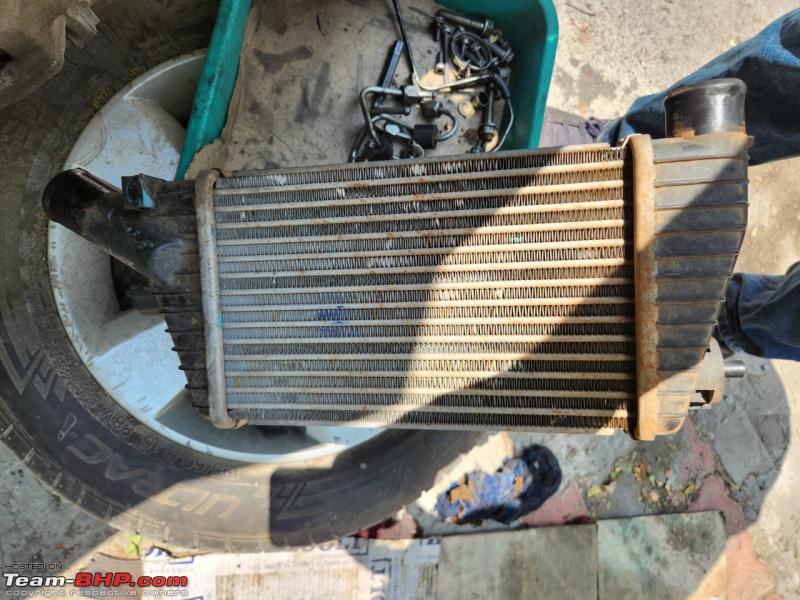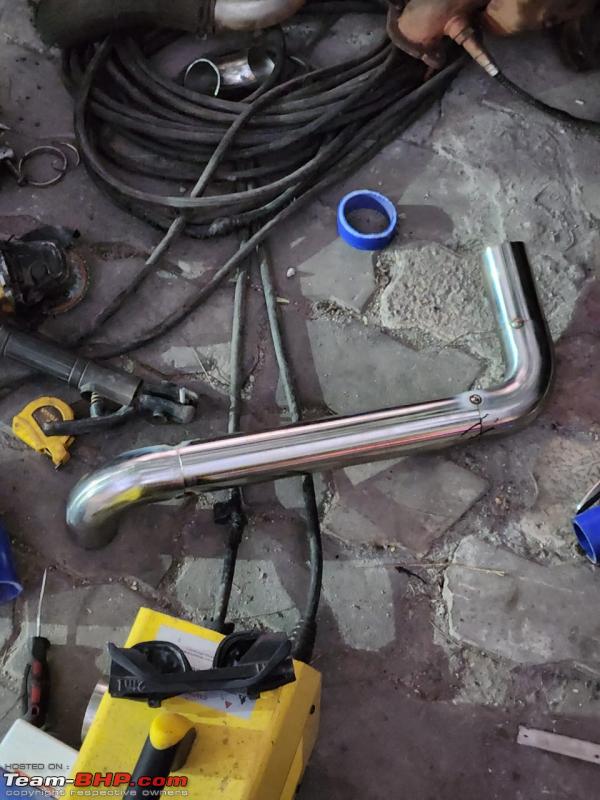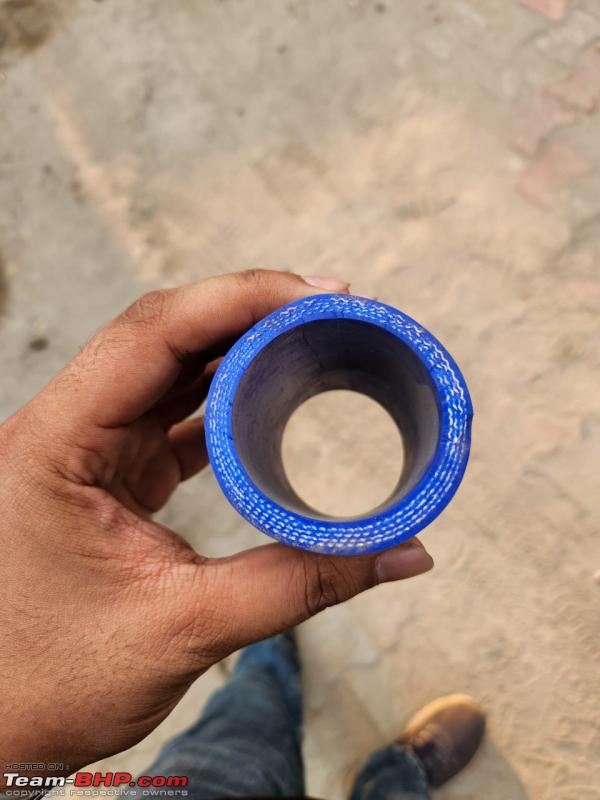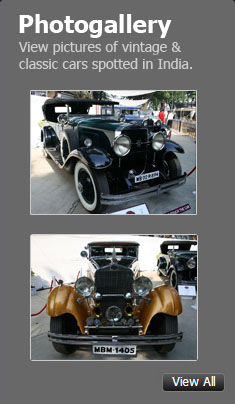News
My Tata Altroz iTurbo Stage 2+ build: Process, challenges & the results
This isn’t just a build. it’s a testament to what passion and expertise can achieve when the odds are stacked tight.
BHPian CannedShroud recently shared this with other enthusiasts:
A Very Exciting Update:
Stage 2+ for the Altroz iTurbo
After months of contemplation and planning, I finally bit the bullet — and the result is spectacular. This wasn’t just a drop-in tune; it was a complete overhaul aimed at unlocking the car’s true potential.
Planned Upgrades:
- Front-Mount Intercooler (FMIC)
- Upgraded Intercooler Plumbing
- Decat Downpipe
- Custom Dyno Tune on 95 Octane
The Journey Begins: Goa to Bangalore
The plan was straightforward: drive to Bangalore, get the work done, and fly back. The road trip itself was uneventful but smooth — a one-shot run with just a coffee break. The Altroz cruised effortlessly at 120 km/h for most of the way, thanks to brilliant 6-lane highways and light traffic after Hubli.
Took the Satellite Ring Road to enter Whitefield — a move that paid off big time. Shoutout to fellow BHPians who helped with the route!
Planning and First Impressions:
Met the team at EE and chalked out the action plan. The next morning, work began with the removal of the bumper and cat-con to assess intercooler fitment. Reality struck hard — zero space behind the bumper, and the grille intrudes way too far in. A meaningful intercooler upgrade was beginning to look near impossible.


To make matters worse, we spotted a coolant leak from the oil cooler. Possibly due to the long, high-rev cruise in the summer heat? No idea. But it was a serious concern — I’ve had poor experiences with Tata spares in Goa, and the thought of going through that ordeal again gave me chills.

Thankfully, EE and their OE part sources came in clutch. The leak was traced to the oil cooler hose, but I wasn’t taking chances. I'd seen another Altroz iTurbo suffer from oil cooler failure, so I got the whole unit replaced along with the hose. Parts were in stock and everything was sorted by the next day. A night-and-day difference from most OE experiences!
Work Begins: No Baseline Dyno, but the Show Must Go On
I had hoped to get a baseline dyno run, but due to scheduling conflicts and an incoming weekend, it would mean delaying the whole process by 3–4 days. With clouds looming and my travel plan hanging, We made the call to proceed without a base run.
With the cat-con removed, the fabricator (Kiran at EE) got to work. The custom downpipe made from SS304 piping all around (2.5, 2.25, 2 inch) along with flanges made from solid SS - that resulted in an absolute work of art — clean welds, precise bends, and solid construction. Both O2 sensors retained in stock locations, along with the heat shield. Couldn’t be happier.


This photo was taken after a few test runs and hence has the yellow tint but imo looks absolutely sick!

The stock downpipe gasket was not up to the mark and after a few test runs started leaking. To fix this, solid copper gasket was used.
The Intercooler Saga:
Now back to the FMIC challenge — one of the trickiest parts of the entire build.
We tried everything: vertical, horizontal, even upside-down orientations. We even considered a larger SMIC and a water-to-air intercooler setup. But with the stock bumper design severely restricting airflow and available space, the SMIC upgrade wouldn’t have been much of a gain. And the water-to-air option? Too complex, too expensive, and simply overkill for what we were aiming to achieve.


A quick look at the stock SMIC (Side mount intercooler)
Eventually, after hours of brainstorming and trial fits, the team made a bold decision — to cut off the stock plastic mounts and fabricate a custom bracket to mount the Behr Mahle tube-fin unit rated for 180 BHP. Risky? Absolutely. But it was the only solution that had a real shot at working with the space constraints we had. And it worked. Just barely — clearances are razor-thin. Even getting the hoses to fit was an exercise in precision. We upgraded from the stock 1.5–1.75-inch rubber piping to 2.25-inch, 4-ply silicone nylon hoses along with SS304 pipes, which required perfect routing and clamping to avoid any interference or rubbing.
None of this would’ve been possible without the sheer spatial brilliance of the team at EE. Huge credit to Jayant and Kiran, who made key calls at every stage — balancing performance, practicality, and safety. The custom mount, though unconventional, was executed so cleanly that it actually looks like it belongs there. The kind of work that shows both guts and craftsmanship.

The remains of the stamped lip of the crashguard had to be trimmed to make this possible




Intercooler plumbing - this was later welded all around just like the downpipe

The mounts were then welded all the way through on the crash guard with a flat cut silicon hose piece to prevent any rattle

4 Ply nylon reinforced silicon hoses, good for 180 degrees and 150psi.
Hats off to the team for pulling off what initially looked close to impossible. This isn’t just a build — it’s a testament to what passion and expertise can achieve when the odds are stacked tight, literally.
Here is the final look with everything closed up. Look at that clearance. Jeez!

With all of that out of the way, time to tune this tiny TEL spinny boy!

Wizardry: Street Logs and Dyno
We loaded a base map from Wolf and began street logging with 2nd and 3rd gear pulls. The data was then sent back to Wolf, and we continued tuning on the dyno the next day.
Turns out, the ECU (Bosch ME17.9.71 - TC1724) is fairly basic, and Wolf didn’t have robust definitions for the Altroz platform yet. The tuning team had to go in blind, reverse-engineering tables manually — a laborious task. Tata had also implemented different limiters for City and Sport modes, adding another layer of complexity.
But the Wolf wizards pulled it off!
One of my biggest gripes was the stock redline — the engine ran out of breath after 5500 RPM, making mid-overtake shifts unavoidable. We gradually raised the limit to 6600 RPM, but dialed it back to 6300 RPM after noticing some floatiness. That’s 100 RPM more than the NA Altroz, which shares the same valvetrain part numbers. A very welcome tweak.
Power Figures and Dyno Graph:
We made 107 WHP and 170 WNm on the dyno. Considering drivetrain losses (18–20% as observed in Tiago NA runs on the coimbatore dyno), this translates to roughly 130 HP at the crank.
Not eye-popping peak gains, but extremely linear and consistent torque across the band — and that’s what makes this tune so effective.
Note: The dyno comparison is stock map + decat + intercooler vs tuned map + decat + intercooler — so actual gains over bone stock are even higher.
By back-calculating, the stock Altroz iTurbo was likely making ~85 WHP, which lines up with community estimates. So overall, we’re looking at ~23% power gain, and most importantly — it’s healthy and usable.
Real World Driving Experience:
The transformation is night and day.
- The car now grabs boost eagerly, especially post 2K RPM.
- Low-end drivability remains intact.
- Torque builds hard and holds into the new redline.
- The car now pulls clean in 2nd and 3rd, and overtakes are a breeze.
- Most importantly, it feels FUN. Not just faster — but alive, like it wants to prance ahead every time you squeeze the throttle.
There are still a couple of teething issues with the map, but the Wolf team is already on it, and a revised version is on the way. Huge thanks to them for diving deep into this platform, especially with an ECU that doesn’t make life easy. The work they’ve done so far has completely changed the character of the car.
Even in its current state, the car is an absolute riot to drive. It builds boost confidently from low down, hits 14.6 PSI by 3,600 RPM, and just pulls with intent. The way it pitches up boost, the responsiveness, the eagerness — it’s a completely different machine now.

A pull. Screaaaming turbo
Whether you're cruising or going for a quick overtake, it’s always ready, always fun, and always putting a smile on your face. Honestly, I don't know it’s faster — but it feels fast, feels alive, and it feels fun, and that’s what matters.
Thanks a lot for reading along and being a part of this journey. Next up - probably some better springs from the Racer
Drive On!
Check out BHPian comments for more insights and information.










.jpg)








